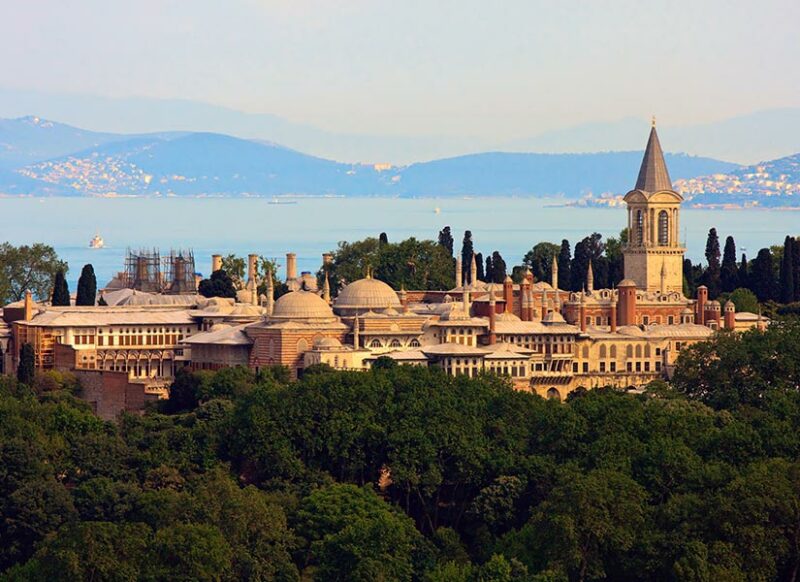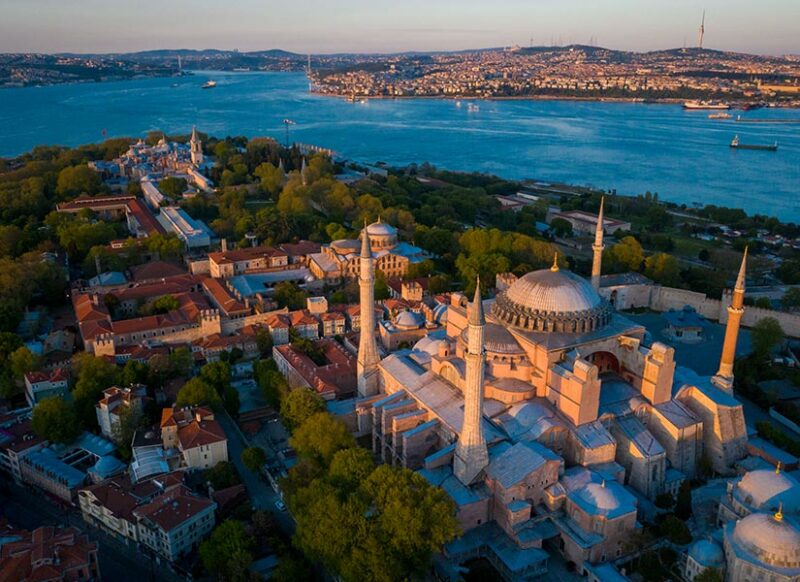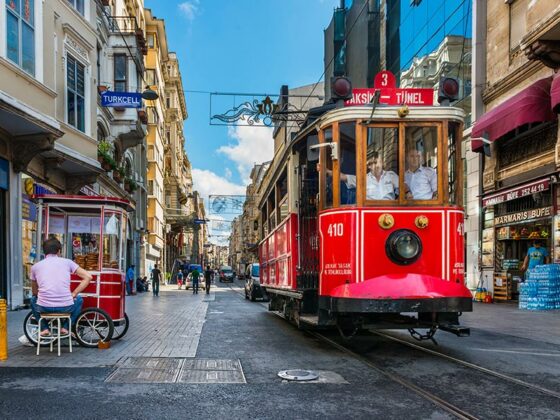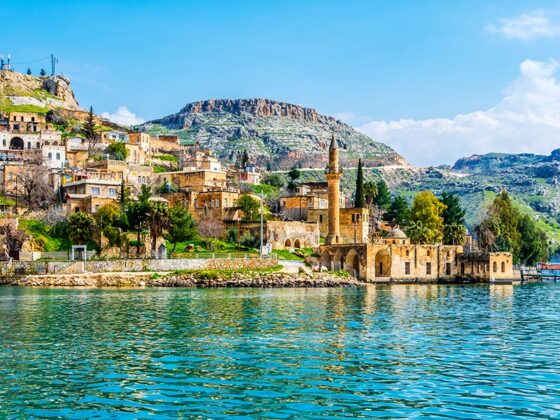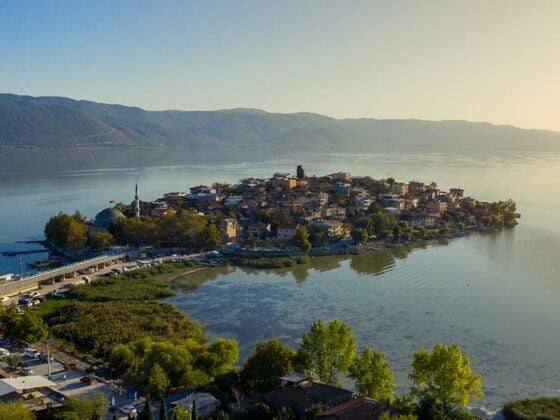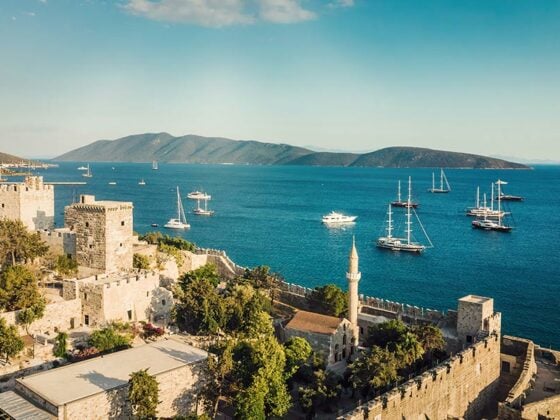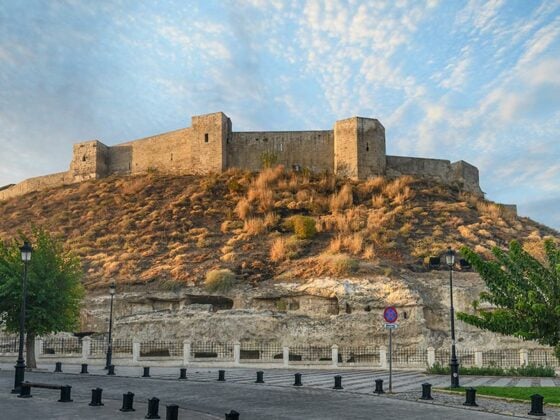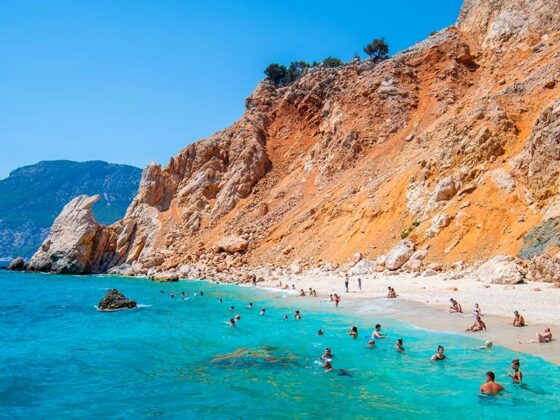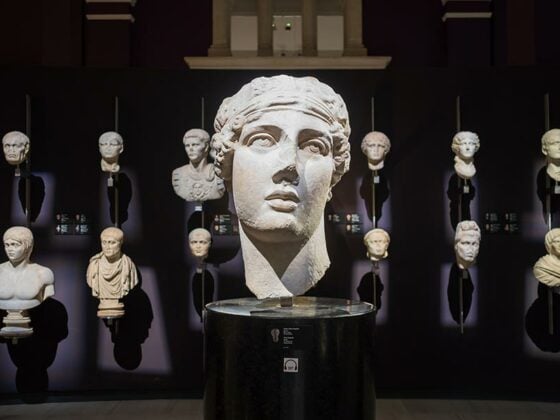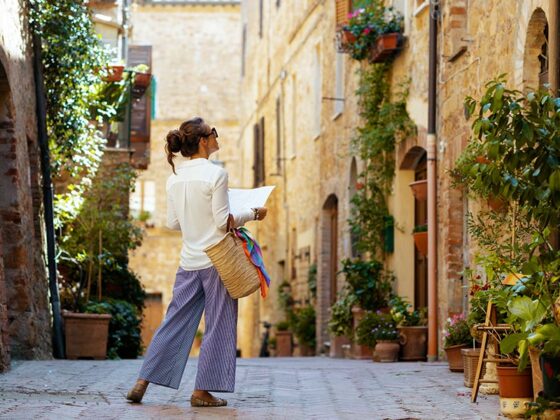Topkapı Palace, Hagia Sophia Mosque, Blue Mosque, Hippodrome (At Meydani), German Fountain (Alman Çeşmesi), Basilica Cistern, Gülhane Park, and several more historical sites are located here. Although this area, which is centred on Sultanahmet Square, is known as the Historical Peninsula, it is a distinctive site that may be described as the essence of İstanbul. The peninsula, which is located between the Sea of Marmara, the Golden Horn, and the Bosphorus, forms a distinct silhouette when viewed from a ferry. Wherever you walk, you will encounter traces from centuries ago. Let’s take a stroll through history at the Historic Peninsula, where you can experience İstanbul.
The centre of the world
Let’s begin our stroll in what we may call the Historic Peninsula’s heart. The Stone of Million, located at the beginning of Sultanahmet Street, is all that remains of a Byzantine monument dating to the 4th century BC. It was considered the zero-mile marker, the departure points in determining the distance of cities to various areas of the world from İstanbul (called Constantinople) in ancient Roman times. This point is the most magnificent reminder of the city’s status as the centre of the world.
Let’s continue along the right sidewalk in front of The Stone of Million. At a distance of just 100 meters, you will see Cevri Kalfa Infants School (Cevri Kalfa Sibyan Mektebi). This former Ottoman palace was built in 1819 by Sultan Mahmut II – one of the enchanting structures of Divan Yolu Street.
After passing the school, continue 50 meters, and you will see Firuz Ağa Mosque, which has a modest appearance in a lush garden. The mosque, constructed during the reign of Bayezid II in 1491, is one of the city’s oldest structures. The German Fountain (Alman Çeşmesi) awaits you after one minute of walking from this path that connects the Hippodrome to Sultanahmet Square. It is situated across the street from the Tomb of Ahmed I. The gazebo-shaped fountain was a gift from German Emperor Wilhelm II to İstanbul and Abdulhamid II. The interior cladding of the Neo-Byzantine-style fountain is adorned with gold tiles. The tughras (sultan’s signature) of Wilhelm II and Sultan Abdulhamid II stand in perfect harmony on the dome of the German Fountain’s golden mosaics. The fountain, one of the most magnificent features in Sultanahmet Square, was built in 1899. Its precious stones and marbles were prepared in Germany, shipped in sections to İstanbul in 1901, and assembled here.
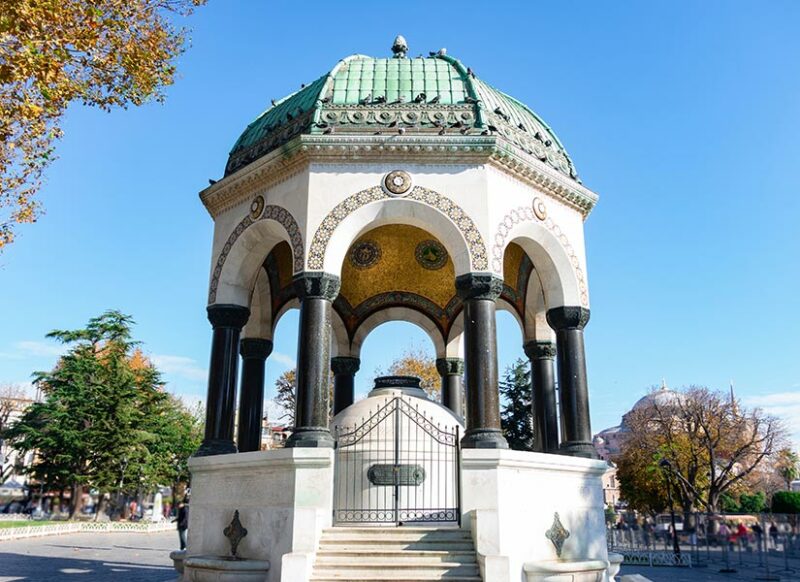
Where to start?
Sultanahmet Square, which contains Hagia Sophia, the Blue Mosque, and the Topkapı Palace, provides one of İstanbul’s most magnificent vistas. Those same monuments that enchant everyone with their magnificence are obviously the attractions in İstanbul that draw the most tourists. Though the region’s foreign visitor density is high, it is vital to see these classic examples of architectural beauty, which include the peninsula’s most unique locations, and immerse oneself in the environment.
The Blue Mosque and its surrounding monuments are the most magnificent sights on our walking tour. Don’t forget to stop for a short rest while admiring these attractions outside Sultanahmet Square.
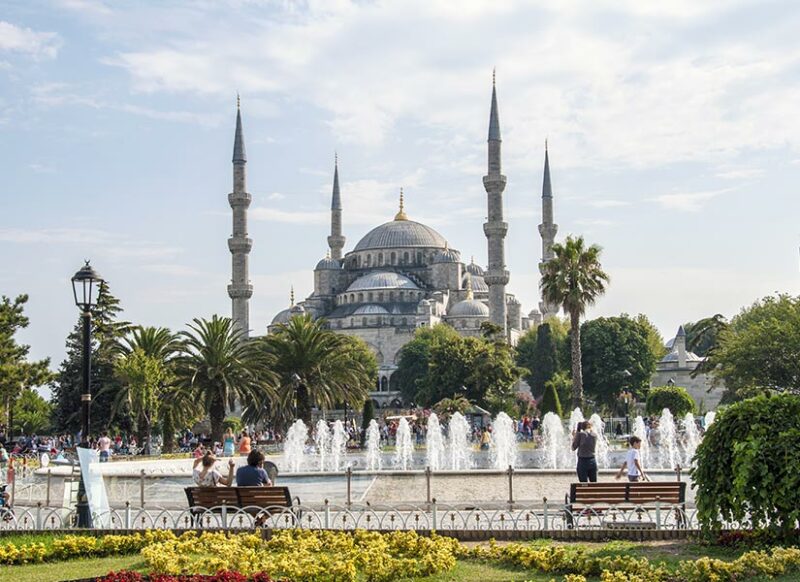
In only a few minutes’ time, you can walk to the Blue Mosque, which is 120 meters from the square. The magnificent minarets are the first aspect that draws notice from the outside. Its massive size impresses you as soon as you walk in. Its construction began in 1609 and was finished in 1617 by Architect Sedefkâr Mehmet Ağa, one of Mimar Sinan’s journeymen. The mosque constructed by the architect with the idea of “greatness, majesty, and grandeur” is one of the most successful reflections of these principles. The mosque, built for Ahmed I, had a square plan and was surrounded on all four sides by a dome. The mosque’s interior is covered with over 20,000 motifs, the majority of which are tulip patterns made from the famed Iznik tiles from the 16th century. The “Blue Mosque” gets its name from the blue aspect cast by these hand-painted tiles. Its architecture is one of the most harmonious fusions of mosques and Byzantine church structures. Sultanahmet, the last great mosque of the classical period, in which traditional Islamic architecture predominates, is also an Islamic-Ottoman social complex, as are the surrounding structures.
After visiting Sultanahmet, we walk for six minutes (500 meters) to the Hagia Sophia Mosque, directly across Sultanahmet. The structure, which has witnessed hundreds of years of history and cultural heritage, stands before us in its majesty and magnificence. Before entering, a walk around to explore the outside area is highly recommended. As a symbol of the conquest of İstanbul in 1453, Hagia Sophia was converted into a mosque. The structure, constructed between 532 and 537 AD, has lived through several eras in its 1500-year existence. The edifice, which had previously collapsed and been rebuilt as a result of construction processes and large earthquakes, has never again suffered this circumstance since Mimar Sinan’s buttress modifications. It is impossible to remain unamazed before the sight of the enormous dome and the size of Hagia Sophia. The Hagia Sophia is the earliest example of an ingenious roofing arrangement in which the dome engineered to cover a four-cornered structure. The dome’s weight is supported by 107 columns. The building, which had formerly been a church, was available to the public as a mosque between 1453 through 1934. Converted into a museum in 1934, the Hagia Sophia was reopened as a mosque in 2020. The Hagia Sophia Mosque is one of the stunning sites that everyone who visits will want to return to, even if they have been there before.
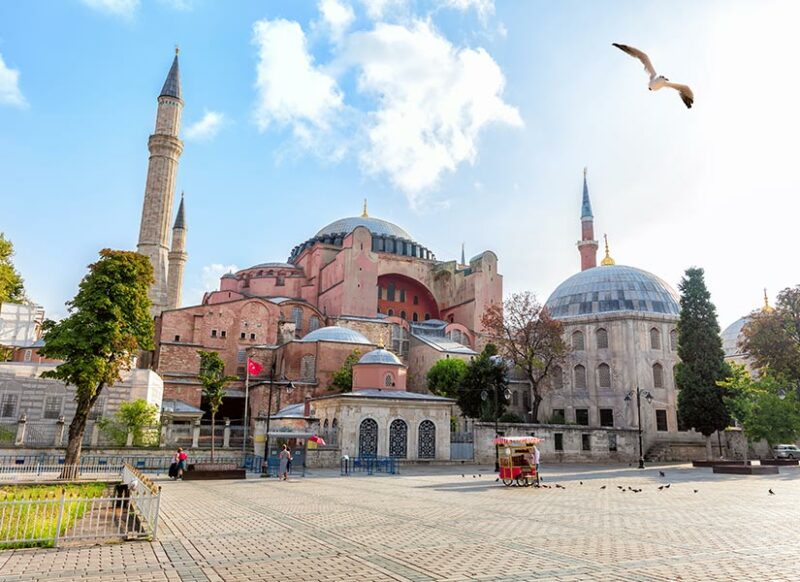
It is appealing to take a break after Sultanahmet and Hagia Sophia and before continuing on with your walk. It is also an excellent opportunity to try local foods in centuries-old settings.
Topkapı Palace Museum
Topkapı Palace Museum is another classic destination on our walking tour; you may get there from the square by walking 650 meters (eight minutes) in the direction of Hagia Sophia Mosque. In the palace’s first courtyard, Hagia Irene awaits us. The building, which is contemporary with Hagia Sophia, is İstanbul’s largest Byzantine church. Its history dates back to the early fourth century. Since 1973, Hagia Irene, Turkey’s starting point for museum studies, serves as a concert hall and has also been the location for a variety of art events.
Topkapı Palace, with its structures, collections, and thousands of archival documents, covers an area of 700 thousand square meters and is one of the world’s largest palace museums. The palace, which witnessed about 400 years of the Ottoman Empire period, should unquestionably be visited to gain an understanding of the lifestyle of the the period as well as the state’s administrative structure.
After visiting the Topkapı Palace Museum, to clear you head, you may wish to walk for a further 13 minutes (1 km) on the park road to the historical Gülhane Park, where you can enjoy a tranquil walk on the green tree-lined road or relax a bit while listening to the sounds of birds.
